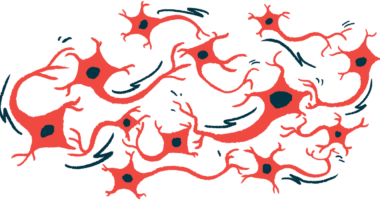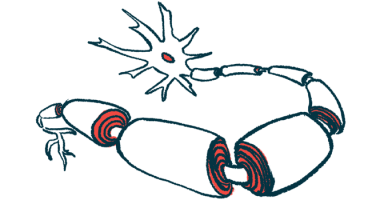VPS13C defects disrupt lysosomes in dopamine neurons
Nerve cell dysfunction is product of improper response to lysosomal stress

Defects in the VPS13C protein, which have been linked to early-onset Parkinson’s disease, disrupt the function of lysosomes, the cell’s recycling compartments, in dopamine-producing nerve cells that are lost in the neurodegenerative condition.
Without functional VPS13C, the Rab10 protein can’t respond properly to lysosomal stress, causing dysfunction in the neurons.
“We found that VPS13C regulates lysosomal health in dopaminergic neurons, the primary cell type that is affected in Parkinson’s disease,” Dimitri Krainc, MD, PhD, the study’s senior author at the Northwestern University Feinberg School of Medicine, said in a university press release. “This converging mechanism provides a therapeutic opportunity to develop drugs that will improve lysosomal function and therefore help patients across different types of Parkinson’s disease.” Details of the discovery were published in the Journal of Cell Biology, in “VPS13C regulates phospho-Rab10-mediated lysosomal function in human dopaminergic neurons.”
In Parkinson’s disease, dopaminergic neurons in the brain are gradually lost, resulting in a drop in dopamine levels and the onset of Parkinson’s symptoms. Dopamine is a chemical messenger, or neurotransmitter, that lets nerve cells communicate and is involved in regulating motor function.
Defects in lysosomes, the cellular compartments that degrade and recycle molecules, have been implicated in Parkinson’s development and progression. For example, mutations in the GBA gene, which encodes a lysosomal enzyme that breaks down the fatty substance glucocerebroside, are a known genetic cause to Parkinson’s.
“Over the years, we have studied mutations in many genes linked to Parkinson’s disease and observed that most of them indirectly or directly impact lysosomal function,” Krainc said.
Recent genetic studies have linked mutations in the VPS13C gene, which carries instructions for a lysosomal protein of the same name, to a rare form of early-onset Parkinson’s that is aggressive and severe.
Here, researchers applied a type of microscopy to monitor the function of lysosomes in human stem cell-derived dopaminergic neurons deficient in VPS13C to see how a defect in it leads to the loss of dopaminergic neurons.
Loss of efficiency in lysosomes
The analysis showed that the lysosomes in VPS13C-deficient dopaminergic neurons were larger than in control neurons. These enlarged lysosomes formed more contacts with other lysosomes, which disrupted their movement and distribution across the cell.
“The loss of VPS13C function that is seen in Parkinson’s neurons causes lysosomes to become larger and form more contacts with each other,” Krainc said. “This disrupts the ability of lysosomes to move throughout neurons.”
The researchers then identified Rab10, a protein that interacts with VPS13C. In particular, VPS13C preferentially interacted with a form of Rab10 modified by a phosphate group, or phospho-Rab10. The two proteins appeared to interact on the membrane of lysosomes.
Consistently, phospho-Rab10 levels in lysosomes were significantly reduced in VPS13C-deficient cells, whereas levels of unmodified lysosomal Rab10 were unaffected.
Researchers then induced lysosomal stress with the chemical chloroquine, which led to an increase in phospho-Rab10 levels in control cells. Levels of phospho-Rab10 in VPS13C-deficient cells were significantly lower when exposed to chloroquine relative to controls, “suggesting an impaired phospho-Rab10-mediated lysosomal stress response,” the researchers wrote.
“We … discovered that VPS13C regulates lysosomal maintenance through the interaction with a ‘helper protein’ called Rab10,” Krainc said. “When this protein is present on the lysosomal membrane together with VPS13C, it keeps lysosomes functional and healthy.”
Further experiments confirmed the ability of lysosomes to degrade and recycle molecules was impaired in VPS13C-deficient dopaminergic neurons.
Overall, “lysosomes become less efficient in breaking down unwanted debris and other cellular components that need to be recycled, which in turn leads to dysfunction and degeneration of dopaminergic neurons,” Krainc noted.
“These findings highlight an important role of VPS13C in regulating lysosomal homeostasis in human dopaminergic neurons and suggest that disruptions in Rab10-mediated lysosomal stress response contribute to disease pathogenesis [processes] in VPS13C-linked [Parkinson’s disease],” the authors wrote.







